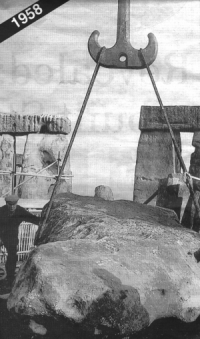Adam, Eve and T. Rex
 Could these people be any more goofy?
Could these people be any more goofy?From the Los Angeles Times - -
CABAZON, Calif. — Dinny the roadside dinosaur has found religion.
The 45-foot-high concrete apatosaurus has towered over Interstate 10 near Palm Springs for nearly three decades as a kitschy prehistoric pit stop for tourists.
Now he is the star of a renovated attraction that disputes the fact that dinosaurs died off millions of years before humans first walked the planet.
Dinny's new owners, pointing to the Book of Genesis, contend that most dinosaurs arrived on Earth the same day as Adam and Eve, some 6,000 years ago, and later marched two by two onto Noah's Ark. The gift shop at the attraction, called the Cabazon Dinosaurs, sells toy dinosaurs whose labels warn, "Don't swallow it! The fossil record does not support evolution."
More ...



